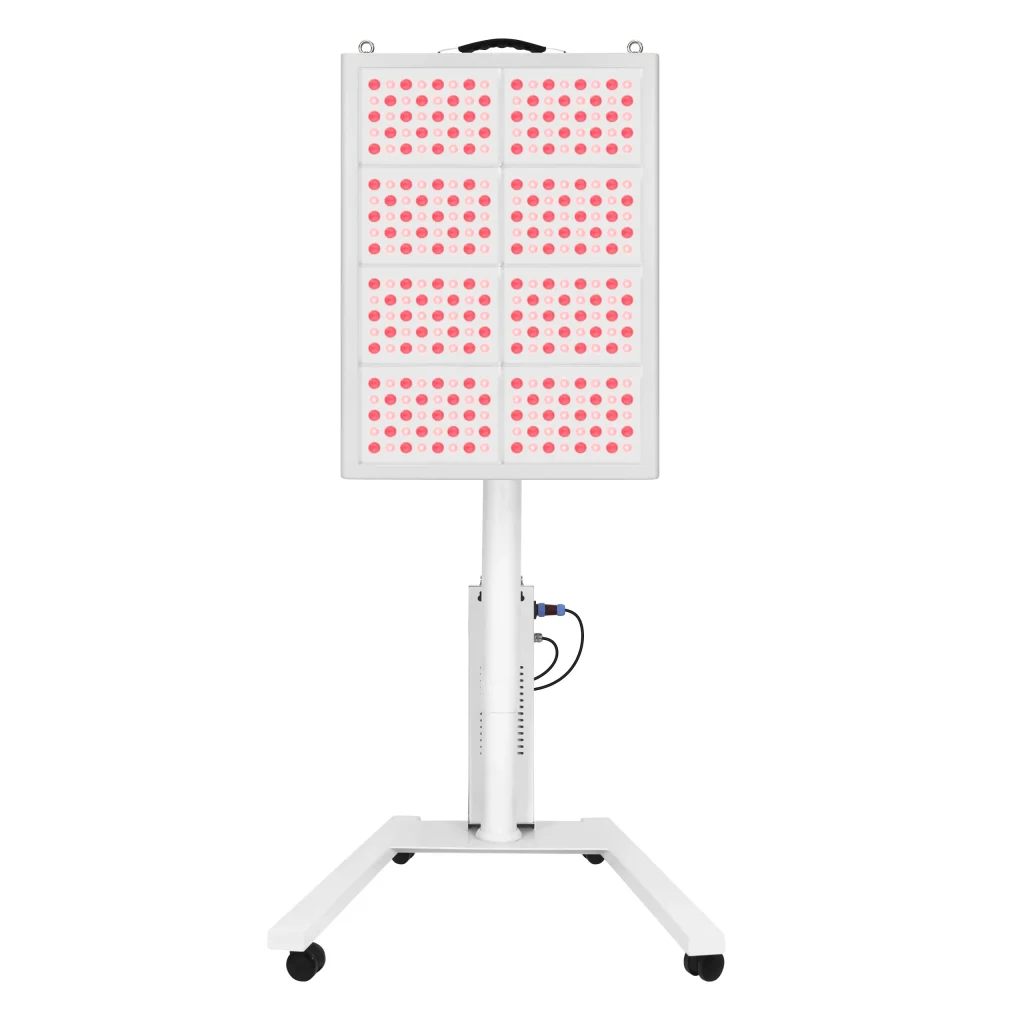How to Use a Red Light Therapy Panel?
What is a Red Light Therapy Panel?
A red light therapy panel (also known as red light therapy or photobiomodulation therapy device) uses LED light of specific wavelengths (typically 630-670nm for red light and 810-850nm for near-infrared light) to illuminate the skin and body tissues. These light waves penetrate the skin and are absorbed by the mitochondria in cells, thereby enhancing cellular energy (ATP) production. This can potentially provide a range of benefits, including:
Improves Skin Health: Promotes collagen production, reduces fine lines and wrinkles, and improves skin tone and elasticity.
Relieves Pain and Inflammation: Helps relieve muscle soreness, joint pain, and inflammation.
Accelerates Wound Healing and Repair: Promotes tissue repair and recovery.
Improves Hair Growth: Used to treat hair loss.
Improves Mood and Sleep: May work by affecting melatonin regulation.
Detailed Instructions for Use (Safety First!)
Step 1: Preparing for Use
Read the instructions carefully: Different brands and models of faceplates may have specific usage recommendations and safety precautions. This is the most important step!
Cleansing Skin: Before treatment, remove makeup and thoroughly cleanse the skin in the treatment area, ensuring there is no residual makeup, skincare, or perfume. This ensures optimal absorption of the light energy and prevents potential reactions.
Wearing Protective Eyewear: While red light doesn’t pose an immediate risk to the eyes like lasers, staring directly at the intense light for extended periods can still cause discomfort or eye strain. Wearing the special protective eyewear provided with the device or keeping your eyes firmly closed is strongly recommended.
Determining the Treatment Position: Choose a stable, flat surface to place or mount the faceplate. Ensure you can sit or stand comfortably in front of it during treatment. Ensure there are no obstructions to prevent accidental contact with the faceplate.
Exposing the Treatment Area: Expose the skin to be treated directly to the light, without clothing intervening.
Step 2: Treatment Procedure
Distance:
The recommended treatment distance is generally 6 inches (approximately 15 cm) to 24 inches (approximately 60 cm) from the face. For larger areas of the body (such as the back and chest), you can use the panel a little further away.
Key Principles: Follow the instructions as recommended. A general rule of thumb is that when you sit in front of the panel, you should feel a gentle warmth on your skin; it shouldn’t feel burning or uncomfortable.
Dosage and Duration:
Treatment Duration: A single treatment session typically lasts between 10 and 20 minutes. Beginners can start with shorter sessions (e.g., 5-10 minutes) to allow their skin to adjust.
Frequency of Treatment: For most goals (e.g., anti-aging, pain relief), you can initially use the panel once daily. After seeing initial results for 4-12 weeks, you can reduce the frequency to 2-3 times per week for maintenance.
Consistency is Key: Like exercise, the effects of red light therapy are cumulative, and regular use is more important than occasional, prolonged use.
Position: Stay as still as possible during treatment to ensure even light coverage of the target area. If multiple areas (e.g., front and back) need to be treated, sessions can be split up.
Step 3: Post-treatment Care
Moisturize: After treatment, skin cell activity increases. Applying moisturizer, serum, or other skincare products at this time will aid absorption and enhance effectiveness.
Hydrate: Drink a glass of water to help your body hydrate and metabolize from the inside out.
Keep a journal: Record the time, distance, and sensations of each session. This will help you find the best regimen for you and track long-term results.
Precautions and Contraindications
Absolute Contraindications:
Photosensitive diseases: Such as lupus erythematosus and porphyria.
Currently taking photosensitizing medications: Such as certain antibiotics (tetracyclines), diuretics, and antidepressants. Consult a doctor.
Epilepsy: Bright flashing lights may trigger a seizure.
Pregnancy: For safety reasons, this product is not recommended for pregnant women.
Active cancer: Use on areas with active cancer is not recommended. Although studies have shown that certain red lights do not stimulate cancer, to avoid any theoretical risk, avoid the affected area and consult a doctor.
Recent use of retinol or chemical peels: These can increase skin sensitivity to light, so it is recommended to wait until the skin has recovered to normal before using this product.
Relatively Contraindications/Cautions:
Thyroid problems: If you have a thyroid gland in your neck, avoid this product or consult a doctor before use.
Head injuries or implants: Those with metal plates or other implants in the brain area should consult a doctor.
Diabetes: Wound healing may be abnormal; special care is required.
Frequently Asked Questions (FAQs)
Q1: What’s the best time of day to use it?
A: There’s no hard and fast rule. Some people prefer to use it in the morning to feel alert, while others prefer to use it at night to help them relax and fall asleep. Avoid using it right before bed if it makes you feel too awake. Maintaining a consistent schedule is key.
Q2: How long does it take to see results?
A: Results vary depending on the individual and their goals.
Skin improvements (e.g., radiance, smoothness): You may notice them within 2-4 weeks.
Wrinkle reduction and firming: Requires 8-12 weeks or longer of consistent use.
Pain relief and recovery: You may notice changes after just a few uses.
Q3: Can I use the faceplate to treat acne?
A: Yes. Red light has anti-inflammatory properties and can help reduce acne inflammation and redness. However, for severe acne, it should be combined with other treatments and consult a dermatologist.
Q4: Can I use it with my eyes open?
A: Not recommended. Always wear protective eyewear or keep your eyes firmly closed. While the risk is low, the potential effects of long-term or repeated exposure are not fully understood.
Post time: 08-27-25

